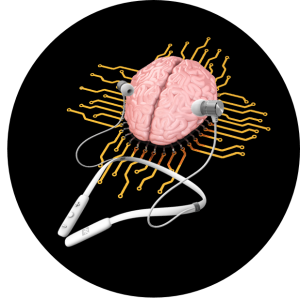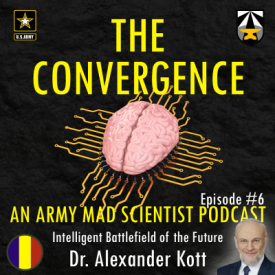[Editor’s Note: Mad Scientist Laboratory is pleased to announce the latest episode of “The Convergence” podcast, featuring an interview with proclaimed Mad Scientist and “Maddest” Guest Blogger, Dr. Alexander Kott, currently Chief Scientist, Army Research Lab (ARL), and soon to be the Senior Research Scientist (Cyber Resiliency), ARL (effective 29 March 2020). Between 2009 and 2016, Dr. Kott served as  the Chief of the Network Science Division, Computational and Information Sciences Directorate, U.S. Army Research Laboratory. He was responsible for a diverse portfolio of fundamental research and applied development in network science and science for cyber defense. He has published over 80 technical papers and served as the initiator, co-author, and primary editor of over ten books, including most recently Cyber Defense and Situational Awareness (2015), Cyber Security of SCADA and other Industrial Control Systems (2016), and Cyber Resilience of Systems and Networks (2019). Please note that this podcast and several of the embedded links below are best accessed via a non-DoD network due to network priorities for teleworking — Enjoy!]
the Chief of the Network Science Division, Computational and Information Sciences Directorate, U.S. Army Research Laboratory. He was responsible for a diverse portfolio of fundamental research and applied development in network science and science for cyber defense. He has published over 80 technical papers and served as the initiator, co-author, and primary editor of over ten books, including most recently Cyber Defense and Situational Awareness (2015), Cyber Security of SCADA and other Industrial Control Systems (2016), and Cyber Resilience of Systems and Networks (2019). Please note that this podcast and several of the embedded links below are best accessed via a non-DoD network due to network priorities for teleworking — Enjoy!]
In this latest episode of “The Convergence,” we talk to Dr. Alexander Kott, Chief Scientist for the Army Research Lab. In this role, he provides leadership in developing ARL’s technical strategy,  maintaining the technical quality of ARL research, and representing ARL to the external technical community.
maintaining the technical quality of ARL research, and representing ARL to the external technical community.
In this episode, we discuss the Internet of Battlefield Things and modernizing the Army. Highlights from the conversation include:
-
-
- The battlefield is becoming saturated with devices that can do computation, some kind of thinking, and can communicate. These are not just things the Army owns.
-
-
-
- Complexity can actually be a good thing. Being able to “hide” on the battlefield is a good thing and we can hide in the complexity of the Internet of Battlefield Things.
-
-
-
- The battlefield of the future will be populated by multiple intelligent species. Humans will be very important but just one among them. How do humans co-exist with those intelligent species? We humans are not known for working and living well with other species, not even ourselves.
-
-
-
- The Army (and larger Department of Defense) has a collaborative relationship with industry that is actually beneficial. It is not just a competition for talent but rather a relationship that is a strength. A rising tide lifts all our boats.
-
-
-
- Every war has seen greater and greater ranges in magnitudes from the Civil War up to the Global War on Terrorism. In the future we may see an Army missile that could be intercontinental. We could see artillery “spanning a fraction of the globe.” This leads to global ground warfare and changes the battlefield calculus. Such a shift in warfare could change the Army’s relationship with other Services and actualize the reality of multi-domain operations even more.
-
-
-
- Regimes that are unethical, immoral, and authoritarian lose the technological edge in the long run because as they run out of ways to use technologies they have developed for unethical and immoral purposes, they do not have thorough investment in other technology areas where the United States is excelling.
-
-
-
- Long-range, intelligent, precision fires may be a major threat to our Homeland in the future. The Homeland may not be as defensible as it has been for centuries.
-
 Stay tuned to the Mad Scientist Laboratory as we will be releasing a new podcast every other week with exciting and impactful guests — next up: The College of William and Mary’s Project for International Peace and Security Fellows!
Stay tuned to the Mad Scientist Laboratory as we will be releasing a new podcast every other week with exciting and impactful guests — next up: The College of William and Mary’s Project for International Peace and Security Fellows!
If you enjoyed this podcast:
-
-
-
- Watch Dr. Kott’s presentation, “The Network is the Robot,” from the Mad Scientist Robotics, Artificial Intelligence, and Autonomy: Visioning Multi-Domain Warfare in 2030-2050 Conference, co-sponsored by the Georgia Tech Research Institute (GTRI), in Atlanta, Georgia, 7-8 March 2017.
-
-
-
-
-
- Read Ground Warfare in 2050: How It Might Look, for which Dr. Kott was awarded “Maddest” Guest Blogger.
-
-



